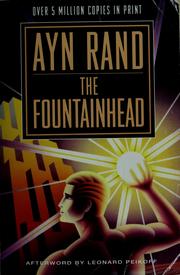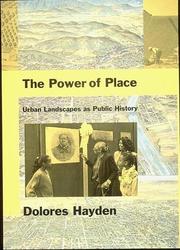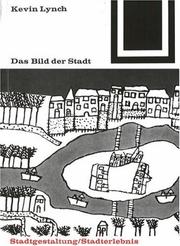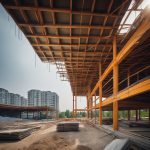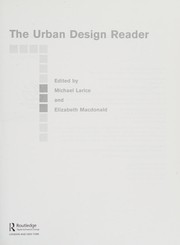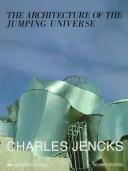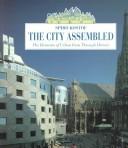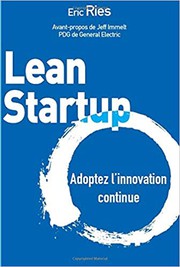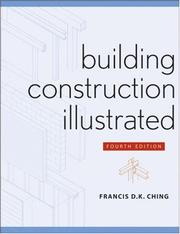Are you ready to take your building skills to the next level? Whether you’re a novice looking to learn the basics or a seasoned pro seeking advanced techniques, there’s a book on building out there for you. In this article, we’ve compiled a list of the 20 best building books that cover everything from construction fundamentals to sustainable architecture. Get ready to expand your knowledge and expertise with these top-notch resources!
Contents
- 1 20 Best Books About Building
- 2 The Death and Life of Great American Cities
- 3 The Architecture of Happiness
- 4 The Fountainhead
- 5 The Devil in the White City
- 6 The Power of Place: Urban Landscapes as Public History
- 7 The Image of the City
- 8 The Architecture of the City
- 9 The City in History: Its Origins, Its Transformations, and Its Prospects
- 10 The Language of Cities
- 11 The Architecture of Community
- 12 The City Shaped: Urban Patterns and Meanings Through History
- 13 The Eyes of the Skin: Architecture and the Senses
- 14 The Urban Design Reader
- 15 The Architecture of the Well-Tempered Environment
- 16 The City of Tomorrow: Sensors, Networks, Hackers, and the Future of Urban Life
- 17 The Architecture of the Jumping Universe: A Polemic: How Complexity Science is Changing Architecture and Culture
- 18 The City Assembled: The Elements of Urban Form Through History
- 19 The Lean Startup: How Today’s Entrepreneurs Use Continuous Innovation to Create Radically Successful Businesses
- 20 Building Construction Illustrated
- 21 The Innovator’s Dilemma: When New Technologies Cause Great Firms to Fail
- 22 Conclusion
- 23
- 24 Top 20 Best Books on Salem Witch Trials Nonfiction:2024 Edition
- 25 Iran Revolution Books: A Curated 2024 Updated List
- 26 Books on Movement: Discover the Top 20 in our 2024 Updated List
20 Best Books About Building
The Death and Life of Great American Cities
by Jane Jacobs
The Death and Life of Great American Cities by Jane Jacobs is a groundbreaking book about urban planning and city development. Jacobs challenges conventional wisdom and offers fresh insights into the dynamics of city life. Through her keen observations and analysis, she emphasizes the importance of diverse and vibrant city neighborhoods, as well as the role of local residents in shaping their own communities. This influential building book not only critiques the prevailing urban planning practices of its time but also presents a compelling vision for creating livable and thriving cities. With its thought-provoking ideas and engaging storytelling, Jacobs’ book continues to inspire and inform discussions on urban development and the book about building and sustaining great cities.
The Architecture of Happiness
by Alain de Botton
The Architecture of Happiness by Alain de Botton is a captivating exploration of the impact of architecture on our emotions and well-being. In this insightful book about building, de Botton examines how the design and aesthetics of our surroundings can profoundly affect our mood and sense of contentment. With eloquent prose and thought-provoking observations, he delves into the connection between our inner lives and the spaces we inhabit, illustrating how a beautiful building can inspire joy and tranquility, while an ugly one can evoke feelings of disquiet and unease. Through engaging anecdotes and philosophical musings, de Botton offers a fresh perspective on the profound influence of architecture on our daily lives, making this building book a must-read for anyone interested in the intersection of design and happiness.
The Fountainhead
by Ayn Rand
The Fountainhead is a captivating novel by Ayn Rand that delves into the world of architecture and individualism. The story follows Howard Roark, a talented and unconventional architect who refuses to conform to societal norms and traditional architectural styles. As he struggles to uphold his uncompromising vision, he clashes with the establishment and faces numerous challenges. The book explores the themes of integrity, creativity, and the pursuit of one’s passion in the face of opposition. With its richly drawn characters and thought-provoking narrative, The Fountainhead is a compelling exploration of the human spirit and the quest for artistic expression. This book about building is a thought-provoking and inspiring read that will resonate with anyone who values independence and the pursuit of excellence.
The Devil in the White City
by Erik Larson
The Devil in the White City by Erik Larson is a gripping non-fiction book about the construction of the 1893 Chicago World’s Fair and the cunning serial killer who used the fair as a hunting ground. This captivating building book weaves together the stories of architect Daniel Burnham, who was tasked with creating a magnificent fair to outshine the Paris Exposition, and H.H. Holmes, a charming and manipulative murderer who used the fair to lure his victims to their deaths. Larson’s meticulous research and vivid storytelling bring the construction of the fair to life, while also delving into the dark and sinister mind of Holmes. The juxtaposition of the beauty and innovation of the fair with the horrors of Holmes’ crimes creates a compelling and chilling narrative that will keep readers on the edge of their seats.
The Power of Place: Urban Landscapes as Public History
by Dolores Hayden
The Power of Place: Urban Landscapes as Public History by Dolores Hayden is a captivating book about the impact of urban landscapes on public history. Hayden explores the ways in which buildings, streets, and public spaces can tell the stories of a community’s past, present, and future. Through engaging narratives and insightful analysis, the book delves into the historical, cultural, and social significance of urban environments, revealing how they shape our collective memory and identity. Hayden’s thoughtful exploration of the relationship between people and their built environment makes this a must-read for anyone interested in urban history, architecture, and the power of place. This building book offers a fresh perspective on how we can understand and appreciate the cities and neighborhoods we inhabit.
The Image of the City
by Kevin Lynch
The Image of the City is a seminal book on urban planning and design, written by Kevin Lynch. This influential book on building explores the way people perceive and navigate the urban environment, and how that perception shapes the design and functionality of cities. Lynch uses case studies and in-depth analysis to illustrate how individuals form mental maps of their surroundings and how these maps influence their interaction with the built environment. By delving into the psychology of urban space, Lynch provides valuable insights for architects, city planners, and anyone interested in the dynamics of urban living. This book about building has had a lasting impact on the field of urban design, and continues to be a foundational text for understanding the relationship between people and their built surroundings.
The Architecture of the City
by Aldo Rossi
The Architecture of the City by Aldo Rossi is a captivating book on building that delves into the essence of urban design and the evolving relationship between the city and its inhabitants. Rossi explores the intricate layers of history, memory, and symbolism within the urban environment, offering a thought-provoking perspective on the book about building. Through insightful analysis and compelling examples, he highlights the significance of timeless elements and the role of collective memory in shaping the building book. With a focus on the enduring qualities of urban form and the interplay between permanence and change, this influential work presents a profound exploration of the city as a complex and dynamic architectural entity.
The City in History: Its Origins, Its Transformations, and Its Prospects
by Lewis Mumford
The City in History: Its Origins, Its Transformations, and Its Prospects by Lewis Mumford is a groundbreaking book about urban development. Mumford traces the evolution of cities from their earliest beginnings to their modern manifestations, exploring the social, cultural, and architectural aspects of urban life. He delves into the impact of technology, politics, and economics on the growth and structure of cities, offering valuable insights into the forces that have shaped urban landscapes throughout history. This building book provides a comprehensive examination of the role of cities in human civilization, making it an essential read for anyone interested in understanding the complex interplay between society and the built environment.
The Language of Cities
by Deyan Sudjic
The Language of Cities by Deyan Sudjic is a captivating exploration of urban spaces and the power they hold. This thought-provoking book about building delves into the history and evolution of cities, offering insights into the intricate relationship between architecture, culture, and society. Sudjic’s engaging narrative takes readers on a journey through the streets, buildings, and public spaces that shape our urban environment, revealing the hidden language of cities and the stories they tell. With a keen eye for detail and a deep understanding of the built environment, Sudjic uncovers the underlying forces that have shaped some of the world’s most iconic cities. Whether you’re a city dweller, an architecture enthusiast, or simply curious about the book on building, The Language of Cities is sure to leave you with a newfound appreciation for the urban landscapes that surround us.
The Architecture of Community
by Leon Krier
The Architecture of Community by Leon Krier is a groundbreaking book on urban design and architecture. Krier’s work is a manifesto for the revival of traditional building practices and the creation of cohesive, human-scale communities. Through insightful essays and beautiful illustrations, Krier emphasizes the importance of building sustainable and aesthetically pleasing environments. This influential book about building challenges the prevailing trends of modern architecture and advocates for the return to timeless design principles. Krier’s vision for a harmonious and livable urban landscape is both inspiring and thought-provoking, making The Architecture of Community a must-read for anyone interested in the future of our cities and towns.
The City Shaped: Urban Patterns and Meanings Through History
by Spiro Kostof
The City Shaped: Urban Patterns and Meanings Through History by Spiro Kostof is a captivating exploration of urban development and architecture. This insightful book delves into the evolution of cities, examining the intricate patterns and meanings woven into their design throughout history. Kostof’s engaging narrative takes readers on a journey through time, unveiling the cultural, social, and political factors that have shaped the built environment. This building book offers a comprehensive overview of how cities have been transformed and reimagined, from ancient civilizations to the modern metropolis. With a keen eye for detail and a deep understanding of architectural history, Kostof presents a compelling study of urban landscapes, making The City Shaped a must-read for anyone with an interest in the dynamic relationship between society and the built environment.
The Eyes of the Skin: Architecture and the Senses
by Juhani Pallasmaa
The Eyes of the Skin: Architecture and the Senses by Juhani Pallasmaa is a groundbreaking book about building that challenges the traditional way of understanding architecture. Pallasmaa delves into the sensory experience of architecture, arguing that the dominance of sight has led to a neglect of the other senses in architectural design. Through a poetic and philosophical lens, the author explores the tactile, auditory, olfactory, and kinesthetic aspects of architecture, urging architects to consider the holistic experience of space. This building book invites readers to reevaluate their perception of the built environment and understand the profound impact of sensory experiences on our relationship with architecture. Pallasmaa’s eloquent prose and thought-provoking ideas make this book on building a must-read for architects, designers, and anyone interested in the intersection of sensory perception and architecture.
The Urban Design Reader
by Michael Larice and Elizabeth Macdonald
The Urban Design Reader by Michael Larice and Elizabeth MacDonald is a comprehensive anthology that explores the diverse facets of urban design. This book delves into the multifaceted nature of city planning, architecture, and the built environment, making it a rich resource for anyone interested in the urban landscape. With a collection of essays, case studies, and theoretical texts, this book provides a well-rounded understanding of the complexities of urban design. Whether you’re a student, practitioner, or enthusiast, this book about building offers a thought-provoking insight into the challenges and opportunities of shaping our cities. From historical perspectives to contemporary practices, The Urban Design Reader presents a diverse range of voices that contribute to the ongoing dialogue about the future of our urban environments.
The Architecture of the Well-Tempered Environment
by Reyner Banham
The Architecture of the Well-Tempered Environment by Reyner Banham is a groundbreaking book on building design and environmental control. Banham explores the relationship between architecture and technology, examining how buildings can be designed to create a comfortable and efficient living environment. He delves into the history of environmental control, from ancient methods to modern technological advancements, and discusses the impact of these developments on architectural design. This book offers a fascinating insight into the ways in which buildings can be adapted and optimized to suit the needs of their inhabitants, making it an essential read for anyone interested in the intersection of technology and architecture. With its insightful analysis and engaging writing style, The Architecture of the Well-Tempered Environment is a must-read for anyone passionate about the built environment.
The City of Tomorrow: Sensors, Networks, Hackers, and the Future of Urban Life
by Carlo Ratti and Matthew Claudel
The City of Tomorrow: Sensors, Networks, Hackers, and the Future of Urban Life is a groundbreaking book on urban development and technology. Authors Carlo Ratti and Matthew Claudel explore the intersection of sensors, networks, and hackers in shaping the future of city life. The book delves into how technology can be harnessed to create more efficient, sustainable, and responsive urban environments. Through insightful analysis and real-world examples, the authors present a compelling vision of the future city, where buildings, infrastructure, and public spaces are seamlessly connected and responsive to the needs of their inhabitants. This thought-provoking book about building offers a fascinating glimpse into the potential of technology to transform our urban landscape and improve the quality of life for city dwellers.
The Architecture of the Jumping Universe: A Polemic: How Complexity Science is Changing Architecture and Culture
by Charles Jencks
The Architecture of the Jumping Universe: A Polemic is a thought-provoking book about the intersection of complexity science, architecture, and culture. Written by Charles Jencks, this book delves into how complexity science is revolutionizing the way we think about and design buildings. Jencks challenges traditional notions of architecture and offers a compelling argument for how the principles of complexity science can inform and transform the built environment. Through engaging prose and insightful analysis, Jencks explores the implications of this paradigm shift on our cultural landscape. Whether you’re an architect, a student of design, or simply fascinated by the built environment, this book provides a fresh perspective on the ever-evolving field of architecture. The Architecture of the Jumping Universe is a must-read for anyone interested in the dynamic relationship between science, architecture, and culture.
The City Assembled: The Elements of Urban Form Through History
by Spiro Kostof and Greg Castillo
The City Assembled: The Elements of Urban Form Through History, authored by Spiro Kostof and Greg Castillo, is a comprehensive book about building that delves into the evolution of urban form throughout history. The book explores the building book process and the elements that have shaped the cities we know today, from ancient times to the modern era.
Readers will be taken on a journey through the development of cities, from the construction of ancient settlements to the rise of modern metropolises. The authors provide in-depth analysis and rich illustrations to showcase the diverse factors that have influenced the building book of urban environments. Whether you’re an architecture enthusiast, urban planner, or simply curious about the history of cities, The City Assembled offers a fascinating exploration of the book about building that has shaped our world.
The Lean Startup: How Today’s Entrepreneurs Use Continuous Innovation to Create Radically Successful Businesses
by Eric Ries
The Lean Startup by Eric Ries is a groundbreaking book on creating successful businesses through continuous innovation. Ries introduces the concept of the lean startup, emphasizing the importance of testing ideas, gathering feedback, and adapting quickly to changes in the market. He argues that traditional business planning is often ineffective, and advocates for a more agile and iterative approach to building companies. Ries offers practical advice and real-life examples to illustrate how entrepreneurs can use lean principles to launch and grow their businesses. This book about building is essential reading for anyone looking to start a new venture or transform an existing one. It provides a framework for building a successful business in today’s fast-paced and uncertain world.
Building Construction Illustrated
by Francis D. K. Ching
Building Construction Illustrated by Francis D.K. Ching is a comprehensive and visually engaging book about construction and architecture. With detailed illustrations and clear explanations, Ching takes readers through the essential principles and practices of building design and construction. This book on building covers everything from materials and structural systems to building codes and sustainability. Ching’s expertise and passion for the subject shine through in the meticulously crafted drawings and diagrams that make complex concepts easy to understand. Whether you’re a student, architect, engineer, or simply curious about the built environment, this building book is an invaluable resource for anyone interested in the art and science of construction.
The Innovator’s Dilemma: When New Technologies Cause Great Firms to Fail
by Clayton M. Christensen
The Innovator’s Dilemma by Clayton M. Christensen is a groundbreaking book about navigating the challenges of disruptive innovation. Christensen explores the concept of ‘creative destruction’ and the impact of new technologies on established companies. He argues that successful companies often fail because they focus too much on sustaining their existing products and services, rather than embracing new, disruptive technologies. Through detailed case studies and insightful analysis, Christensen provides a roadmap for businesses to innovate and thrive in the face of technological change. This is not just a book on building successful companies; it’s a blueprint for understanding and overcoming the challenges of disruptive innovation. Whether you’re a business leader, entrepreneur, or simply interested in the dynamics of technological change, The Innovator’s Dilemma is a must-read.
Conclusion
Building is a fascinating and complex subject, and these 20 best books about building are a great resource for anyone interested in the topic. Whether you’re a professional in the construction industry or a DIY enthusiast, these books offer valuable insights, tips, and inspiration for your building projects. From architecture and design to construction techniques and project management, there’s something for everyone in this diverse collection of books. So pick up a book, grab your tools, and start building!
Which Building book is best?
The best book on Building can vary with personal preference, but three widely recommended titles are:
- The Death and Life of Great American Cities by Jane Jacobs,
- The Architecture of Happiness by Alain de Botton,
- The Fountainhead by Ayn Rand.
Each offers valuable insights and could be a great starting point.
What are the best books to learn about Building?
For those looking to learn about Building, there is a wealth of literature that can provide a comprehensive understanding of the subject. Some of the most highly recommended books include:
- The Death and Life of Great American Cities by Jane Jacobs,
- The Architecture of Happiness by Alain de Botton,
- The Fountainhead by Ayn Rand,
- The Devil in the White City by Erik Larson,
- The Power of Place: Urban Landscapes as Public History by Dolores Hayden,
- The Image of the City by Kevin Lynch,
- The Architecture of the City by Aldo Rossi,
- The City in History: Its Origins, Its Transformations, and Its Prospects by Lewis Mumford,
- The Language of Cities by Deyan Sudjic,
- The Architecture of Community by Leon Krier
These books offer a range of perspectives on Building, covering various aspects and approaches to the subject.
What are the best books on Building?
The best books on Building include:
- The Death and Life of Great American Cities by Jane Jacobs,
- The Architecture of Happiness by Alain de Botton,
- The City Shaped: Urban Patterns and Meanings Through History by Spiro Kostof,
- The Eyes of the Skin: Architecture and the Senses by Juhani Pallasmaa,
- The City in History: Its Origins, Its Transformations, and Its Prospects by Lewis Mumford,
- The Image of the City by Kevin Lynch.
Each offers unique insights into the subject. While these books on the topic of Building are highly regarded, it’s important to note that any list of ‘best’ books is subjective and reflects a range of opinions.
What are the best Building books of all time?
Choosing the best Building books of all time can vary depending on who you ask, but seven titles that are often celebrated include
- The Death and Life of Great American Cities by Jane Jacobs,
- The Architecture of Happiness by Alain de Botton,
- The Power of Place: Urban Landscapes as Public History by Dolores Hayden,
- The City in History: Its Origins, Its Transformations, and Its Prospects by Lewis Mumford,
- The Architecture of Community by Leon Krier,
- The Eyes of the Skin: Architecture and the Senses by Juhani Pallasmaa,
- and The City Shaped: Urban Patterns and Meanings Through History by Spiro Kostof.
Each of these books has made a significant impact in the field of Building and continues to be influential today.



